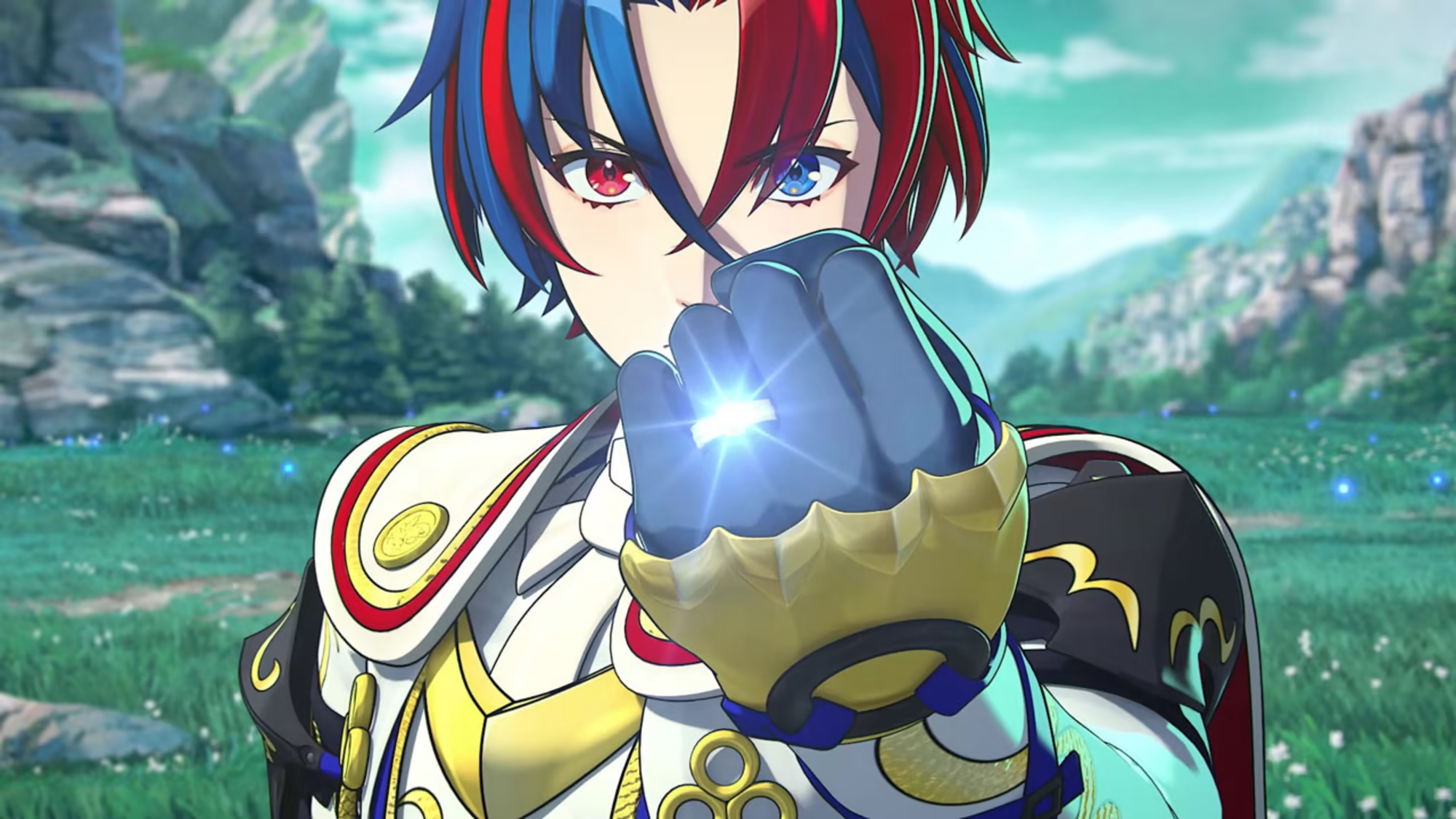Fire Emblem: Engage Review: Date the Story, S-Support the Gameplay
Disclaimers
- This post will avoid all story spoilers, but I'll likely discuss some gameplay mechanics that get introduced as the player progresses.
- I completed the entire game on the "Hard/Classic" difficulty, which took me about 60 hours. I hate grinding, so I spent very little time with many of the game's outside-of-battle mechanics (but completed many of the Paralogues)
- I've played about 5 Fire Emblem games. I'm no hardcore series veteran, but I know my way around the weapon triangle.
Context
Given that this is, pretty much, the universally-held opinion of Fire Emblem: Engage, why write a review almost a year after the game's release date? Hasn't everything that one could possible say about this game already been said?
While not necessarily inaccurate (I'll get to that in a bit), I don't think it's entirely fair to Engage. In my opinion, the game deserves more than just "It's a pretty good Fire Emblem" game. Rather, there's a lot of things that the game gets right (and wrong) that warrant further discussion.
I've been a fan of the series since Fire Emblem: Awakening (I can hear "LynLover86" yelling in the background), but I've played many Fire Emblem titles since then: Conquest (3DS), Echoes: Shadows of Valentia (3DS), and Sacred Stones (GBA). But starting with Awakening, I immediately fell in love with the series' unforgiving, calculated gameplay. There's nothing else quite like it.
I passed on Three Houses (Engage's predecessor) due to how heavily it appeared to lean on its , and since Engage's reviews seemed to imply that these elements had been significantly pared back, I figured that Engage would be a great time for me to jump back into the series.
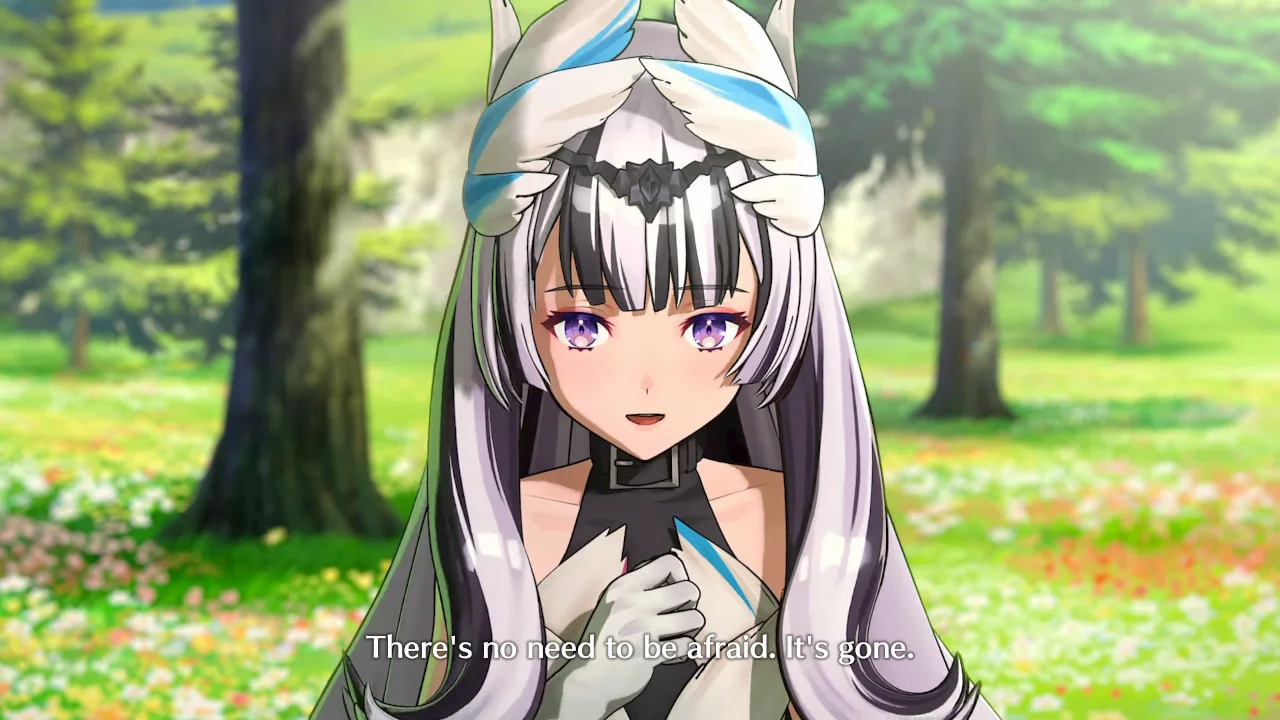 There's no need to be afraid. The social dating-sim elements from Fire Emblem: Three Houses are gone. Image Credit: Nook Gaming
There's no need to be afraid. The social dating-sim elements from Fire Emblem: Three Houses are gone. Image Credit: Nook Gaming
So, after managing to bring all of my units safely to the finish line (despite being tempted to offer Bunet as my sacrificial ), what did I think of Engage?
The Good
Presentation
Everybody knows by now that I hate silly anime designs as much as the next guy. When screenshots of this game first came out, fans of the series starting disaffectionately referring to the main character as "Toothpaste-chan", and I can't say that I disagree; his/her design is ridiculous (doubly so for the female version's accentuating-tie-between-the-boobs look).
But despite this, I'll admit that I really like Engage's vibrant art style. It lends a brightness and energy to the experience that (in my opinion) gives the game a more modern-looking feel.
This carries over to the game's character design; yes, the game still borrows heavily from the high-fantasy genre, evident by the amount of tomes, lances, and capes present. But when units are paired with special units called "Emblems", these designs veer into uncharted, neon-glowing territories. Some characters sprout futuristic wings, while others are adorned with spinning propulsion systems. As to how these futuristic aesthetics make sense in the Fire Emblem universe, I'm not really sure. But if I'm being honest, I'd call it a welcome change-up from a style that the series has gotten, perhaps, too comfortable with.
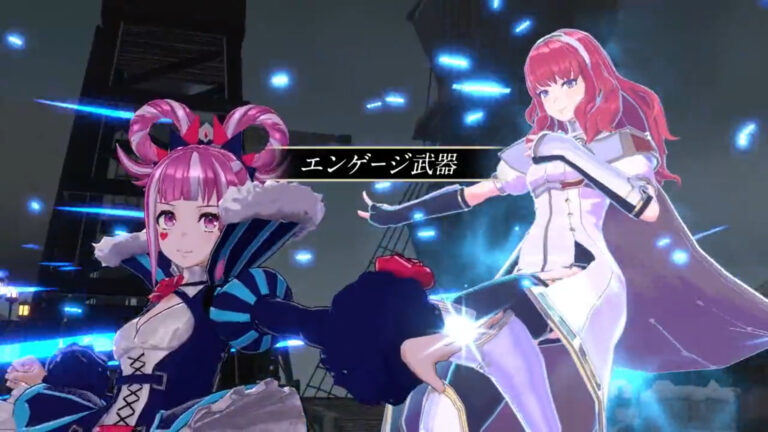 Say what you want about the character designs, but there's no denying that Engage's art style can be striking at times. Image Credit: Serenes Forest
Say what you want about the character designs, but there's no denying that Engage's art style can be striking at times. Image Credit: Serenes Forest
More importantly, Engage greatly improves upon in regards to visual clarity. While not perfect (more on that later), the game's bright colors make units stand out a bit better against the background. And for a game that primarily tasks players with answering questions likes "where are my positional weak points?", or "where should I begin my assault?", or "who is going to die next turn unless I intervene?", this stylistic change-up is much appreciated.
And, as expected from any mainline Nintendo game, Engage's music is simply phenomenal (excluding its ). I'm not sure how else to the describe it, but it's absolutely criminal that this game's soundtrack didn't win every video game music award, ever.
The game's excellent soundtrack is complemented by an excellent sense of audio awareness: Engage knows when to deploy something soft and sweet, and it also knows when to ramp up the tempo. Most importantly (and I can't stress this enough), it knows when to get out of the way; most of Engage's mid-battle music is catchy, but not obtrusive or attention-grabbing, giving players plenty of mental space to think. Far too often do games (anime games in particular) get carried away with complicated melodies during moments that deserve attention elsewhere, and thankfully, Engage is acutely aware of this.
Speaking of audio, I also have to mention that (aside from a few stinkers like the main male protagonist) there are some steller voice acting performances in this game. Censorship controversy aside, characters like Goldmary, Ivy, and Yunaka give standout performances.
Put simply, this is by far the best looking and best sounding Fire Emblem game to date.
Gameplay
Yes, I said that I was going to touch on aspects that weren't talked about to death, but it bears repeating that the moment-to-moment gameplay during battles is peak Fire Emblem. I'm going to avoid explaining the ins-and-outs of the mechanics (you can find that here) so that I can focus on commentary, rather than explanations. But if you decide to stop reading here, let me reiterate: if you like Fire Emblem games, then Engage is a must-play.
For those still with me, let me expand on that: in my opinion, Fire Emblem is at its best when it feels like you're playing chess, rather than a typical RPG. Sure, stats, EXP, and character progression can be compelling features that encourage player freedom and choice, but they can also disrupt a game's balance. Being overleveled tends to trivialize the strategy experience, while being underleveled tends to force players to waste time grinding or playing silly minigames.
Put another way, I'd rather win a battle of wits, rather than a battle of patience.
In this sense, I'm happy to report that, despite it containing a plethora of ways to waste players' time, Engage is still more than willing to get out of its own way. None of the game's silly systems (tea parties, ring polishing, "Take care of a virtual cat-looking thing", etc) are required to succeed in Engage.
Want proof? Despite me being of average intelligence and having less-than-average patience, I was able to complete the game on Hard/ mode without interacting with any of these features. Instead, Engage helpfully gives players everything they need to succeed as long as they pay careful attention to the way they .
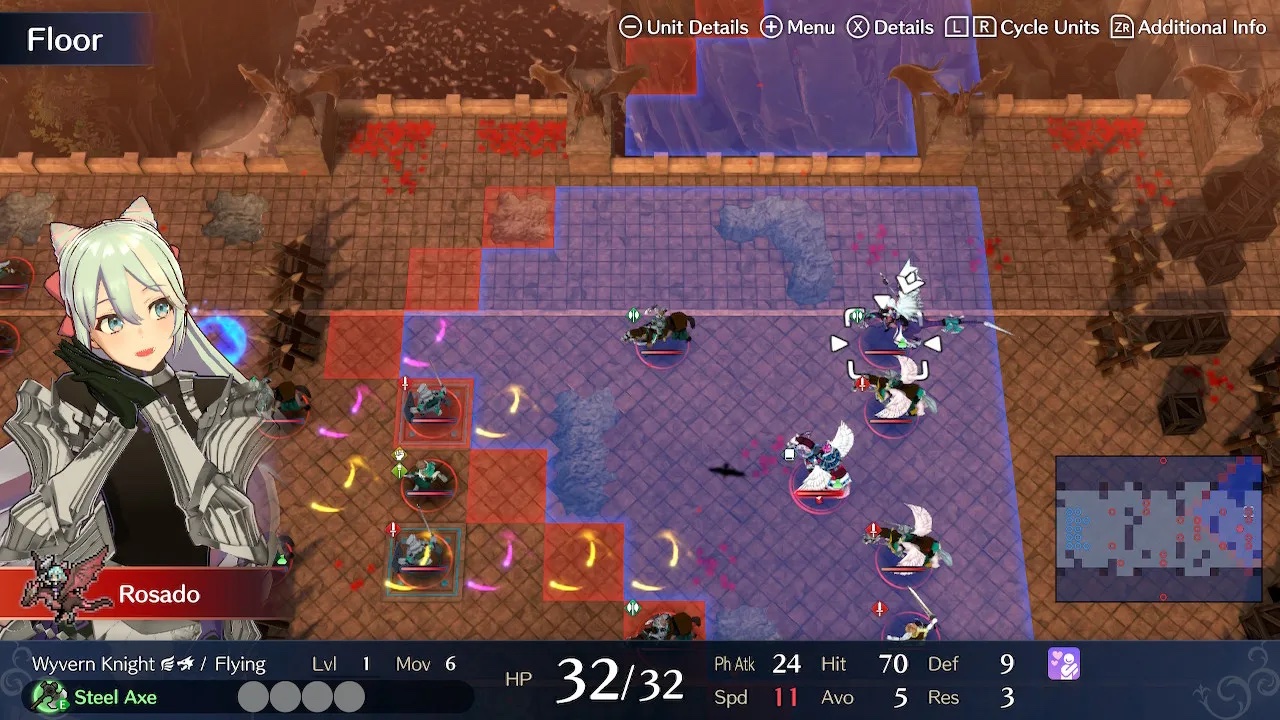 Thinking several moves ahead (again, like Chess) will prove vital in ensuring that all of a player's units survive. Image Credit: Eurogamer
Thinking several moves ahead (again, like Chess) will prove vital in ensuring that all of a player's units survive. Image Credit: Eurogamer
That I was able to complete the game in the way I wanted to is a testament to how brilliant some of its mechanics are. One such mechanic is the re-introduction of the series' classic . Like other Fire Emblem games, the weapon triangle gives each unit a clear role to nestle into.
For some examples: up against a lot of armored foes? Then it'd be wise to deploy lots of magic users. Surrounded by flying units? Bring a couple of archers to snipe them down. The map is crawling with mages? Deploy your speedy swordsmen to pierce through their delicate robes.
Engage also adds an excellent twist to the formula: by attacking a unit with what they're weak against (i.e. hitting an axe wielder with a sword), the opponent becomes "broken", meaning that they cannot counter attack for the next few turns. Again, it's another tool that players can use to add extra utility to low-damage units, or added life insurance for low-defense units.
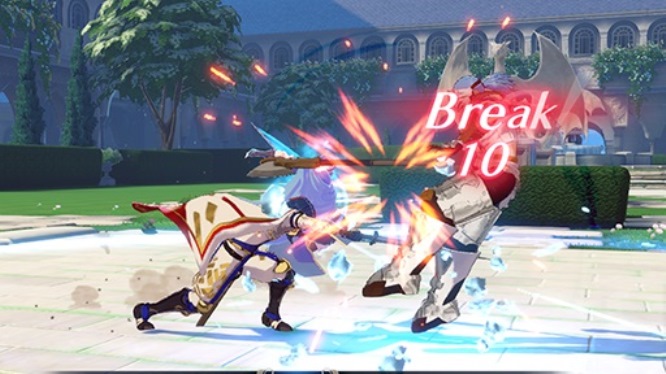 Hopefully Engage's Break mechanic becomes a permanent addition to the series. Image Credit: Nintendo Everything
Hopefully Engage's Break mechanic becomes a permanent addition to the series. Image Credit: Nintendo Everything
The sum of these changes means that players are forced to carefully consider the selection of each unit and their weapons before embarking, rather than mindlessly picking their most powerful units. Battles become less about how much resources or XP the player has, and more about intelligent use of the tools available to them, which is exactly what I want in a strategy game.
This ties into other reason that Engage's gameplay excels: there are so many tools at the player's disposal that they can leverage, and this is thanks to the game's ingenious .
Want to temporarily give your unit the ability to teleport someone across the map? Want to dash through lines of enemies? What about an ability that lures enemies in for one turn, culminating in a huge multi-space explosion on the next? The Emblem system makes this, and more, possible.
Any Emblem can be paired with any unit, which opens up a floodgate of possibilities, which encourages player experimentation and creativity. For example, one of my favorite moments with Engage was when I concocted a hare-brained strategy that hinged upon using Veyle and Micaiah to launch Timerra and Ike half-way across the map, and the payoff when it actually worked was incredible.
Even more interesting is that enemies can use these emblems and their abilities, too. I'll admit that the Emblems seemed a little too overpowered in Engage's first half, but proved to be absolutely essential in the second half in order to contend with enemies using these same tools against you.
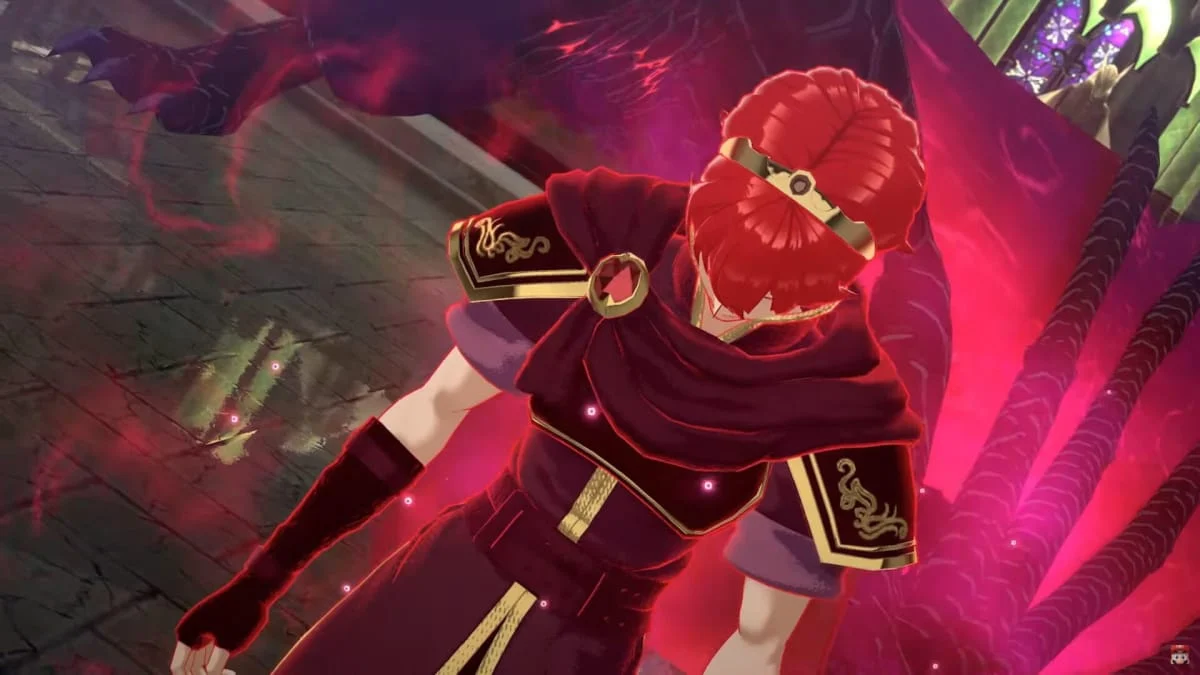 Enemies can use Emblems, too. For example, Lyn's "Astra Storm", which fires a barrage of arrows from a million miles away, can be particularly disruptive to an otherwise ironclad strategy. Image Credit: Tech Raptor
Enemies can use Emblems, too. For example, Lyn's "Astra Storm", which fires a barrage of arrows from a million miles away, can be particularly disruptive to an otherwise ironclad strategy. Image Credit: Tech Raptor
And if the complexity of this sounds scary to you, then fear not: almost every Emblem comes with a default pairing that is more than adequately strong. For example, Marth is naturally paired with Alear, Timerra is naturally paired with Ike, etc. So, if you'd rather have this process streamlined, Engage is willing to help.
I also want to briefly discuss the game's : some people online seem to absolutely detest its inclusion in modern Fire Emblem games, but I think most of their arguments boil down to "you're not a real gamer". Fortunately for me, my time is far more valuable than the opinions of people on the internet that I've never met, and I'd imagine that most well-adjusted players will feel the same. I suppose you could make an argument that the absence of a safety net could make battles more tense, but no one is forcing a gun to anyone's head to use it. Overall, I welcomed the feature.
In summary: above all else, Engage excels as a strategy game. Past the anime cringe, threadbare story, and pointless time-wasters (more on that below), the game is a masterclass in addictive, thoughtful, and flexible strategy game design. For that reason alone, I'd recommend it both to newcomers to the genre and fans of the series.
The Meh
Unfortunately, despite my praise, Engage has plenty of issues. I wouldn't call any of them a "deal breaker", so instead of spending paragraphs on each issue, I'll briefly touch on each one:
-
I cannot overstate how robotic and stilted the main (male) character's performance is. Almost every time Alear spoke, I couldn't help but think, "this is a terrible approximation of how humans talk". I'm not a voice actor, but I think this is due to how cleanly-enunciated his lines are. The actor seems far too concerned with making every syllable crystal clear, which gives his performance an alien-like quality.
-
Support conversations with Emblems consist of two characters blurting out meaningless rhetoric at each other ("When facing adversity, hold strong and believe in our friendship to turn the tide of battle"). It would have been nice to converse with past Fire Emblem characters, rather than with motivational posters.
-
There are a few interesting maps in the mix (Alear's Paralouge is a highlight), but most missions simply task players to defeat all of the opponents' units.
-
As mentioned above, don't both with any of the activities at . They're anti-fun time sinks that don't offer any meaningful rewards. For example, I completely ignored the little cat thing since every interaction triggered an unskippable 15-second cutscene.
-
While most of the game's character designs are simply silly (I actually like Timerra's design!), some designs border on ridiculous. Why is Ivy wearing a cage on her face? Was Celine modeled after a cupcake? Why does Panette look like Jack Skellington?
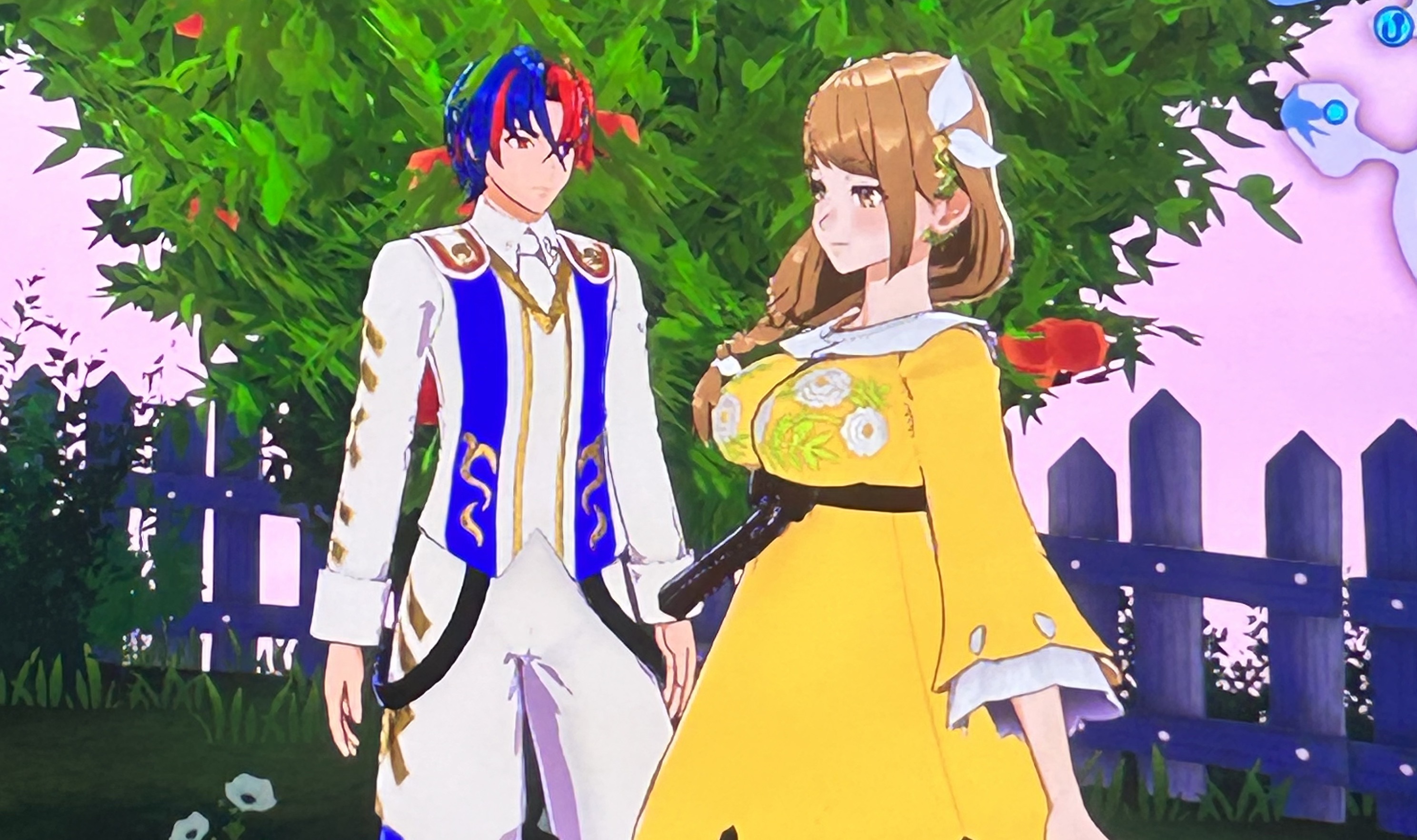 And for my final question: how on earth was Goldmary able to vacuum-seal her boobs to her dress?
And for my final question: how on earth was Goldmary able to vacuum-seal her boobs to her dress?
The Ugly
We now arrive at the section where I talk about issues that actively hindered my experience with Engage. More than a little frustrating, these are problems that absolutely need to be addressed in future installments of the Fire Emblem series.
Information Management and Discovery
One major issue with Engage that doesn't seem to be present in online discourse is how poor the game's information management is. For a game where players need to know as much about the current battle as possible, I'm honestly shocked by how much Engage regresses in this area.
For comparison's sake, let's start by taking a look at Fire Emblem: Awakening, a game released in 2012 on the 3DS.
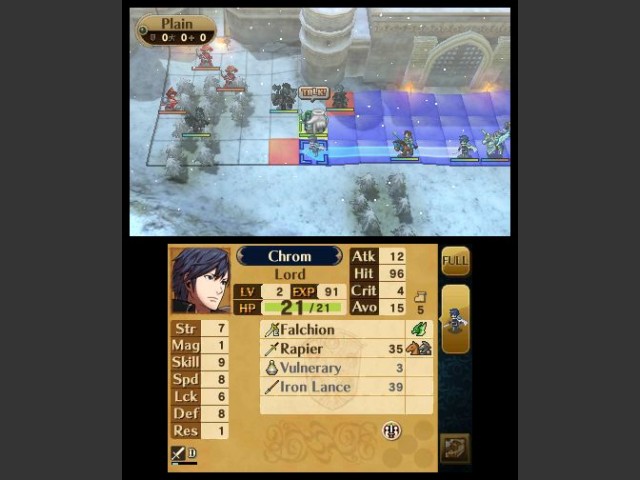 Despite the low resolution, notice how absolutely jam-packed Awakening's interface is with useful info right at the player's fingertips. Image Credit: Discovering Game Design
Despite the low resolution, notice how absolutely jam-packed Awakening's interface is with useful info right at the player's fingertips. Image Credit: Discovering Game Design
This awesome blog post, which deserves its own read, goes into great detail about how Awakening made full and excellent use of the 3DS's dual screens. Enemy and player units are clear and distinct, unit stats/weapons/skills are organized and accessible, and with the tap of the screen, the entire map can be displayed to get a general sense of player/enemy positioning. As an added UX flourish, anything can be tapped on to reveal more information. Want to be reminded about what Dexterity does, or the effect of a certain skill? Simply tap on it to reveal a tooltip explaining exactly that. For most humans , such a feature is invaluable.
Put simply, not once while playing Awakening did I find it difficult to quickly get the information I needed to confidently make decisions.
Now, let's look at Engage. Let's say that I want to remind myself what abilities a particular unit has. Here's how I'd do that:
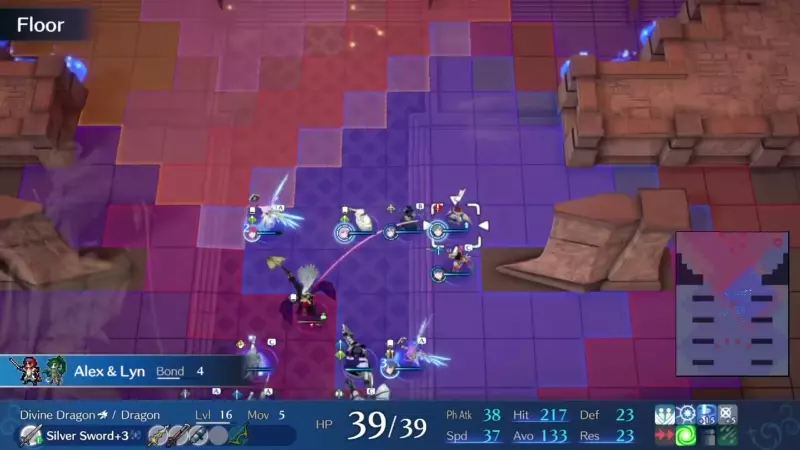
To figure out what the right-most ability does, I need to select the unit, press X, and them use the d-pad to move the cursor all the way to the right. For those counting at home, that is 14 button presses.
To answer clever readers that might be thinking, "well, obviously you're playing in Docked mode! Surely you can tap on the interface while undocked!", then I'd agree with you: that would be an perfectly sufficient compromise. But no, Fire Emblem: Engage for the Nintendo Switch, featuring an OLED 6-inch touchscreen, does not utilize the touch screen.
Confusingly, the interface also omits certain stats, such as Dexterity, Dodge, and Luck, the first two being really important in the latter half of the game. To view these stats, one has to press the "-" button (which is seldom used in most Switch games), which triggers a 2 second transition to a different screen that replaces the overhead view. Take a look:
 If you need to be reminded as to what "Luck" does, you'll have to press "Down" about 20 times.
If you need to be reminded as to what "Luck" does, you'll have to press "Down" about 20 times.
Great, I can view the unit's stats, but now I can't see the battlefield anymore. What was I doing again? What kinds of enemies is this unit near? Context-switches like these are especially disruptive for a game that is mostly cerebral.
Let's play a different game: in the screenshot below, which unit still hasn't acted yet?
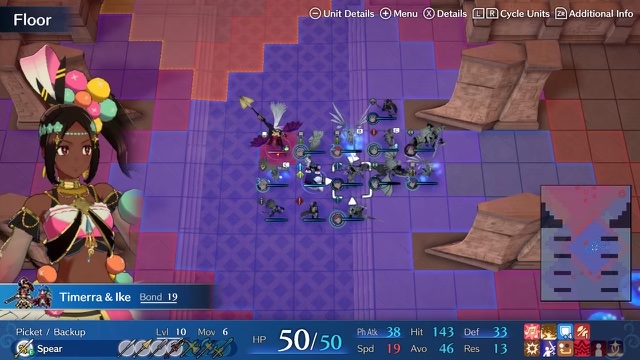 There is not nearly enough of a distinction between units, which is exacerbated when moved units become gray-tinted.
There is not nearly enough of a distinction between units, which is exacerbated when moved units become gray-tinted.
The answer is: the unit left of the selected unit (Timerra). But how long did it take you to find him? If you're like me, then the answer is "way too long".
This highlights another issue: why do character models (especially when grayed-out) look so similar to each other? As I mentioned earlier, Engage is, thankfully, much more visually clear than Three houses, but both pale in comparison to Awakening's incredibly distinct 2D sprites.
To be clear, this is a functional complaint, rather than an aesthetic complaint: during my time with Engage, I would often misidentify my flying units, thinking I was moving one with high resistance when I was actually moving a unit with low resistance (i.e. Hortensia vs Rosado). This would often lead to cheap, frustrating, and ultimately avoidable deaths.
There are many more criticisms I could levy about this game's interface. For example, the game's minimap display, which used to occupy the bottom screen in Awakening, now has three options: hidden, uselessly ant-sized, or gigantically-obtrusive. Couldn't they have picked some middle ground, or allowed players to fiddle with its opacity? And why does the minimap not differentiate between moved and unmoved units? Coupled with a camera that is either way too zoomed in or way too zoomed out, the Engage's minimap is practically useless.
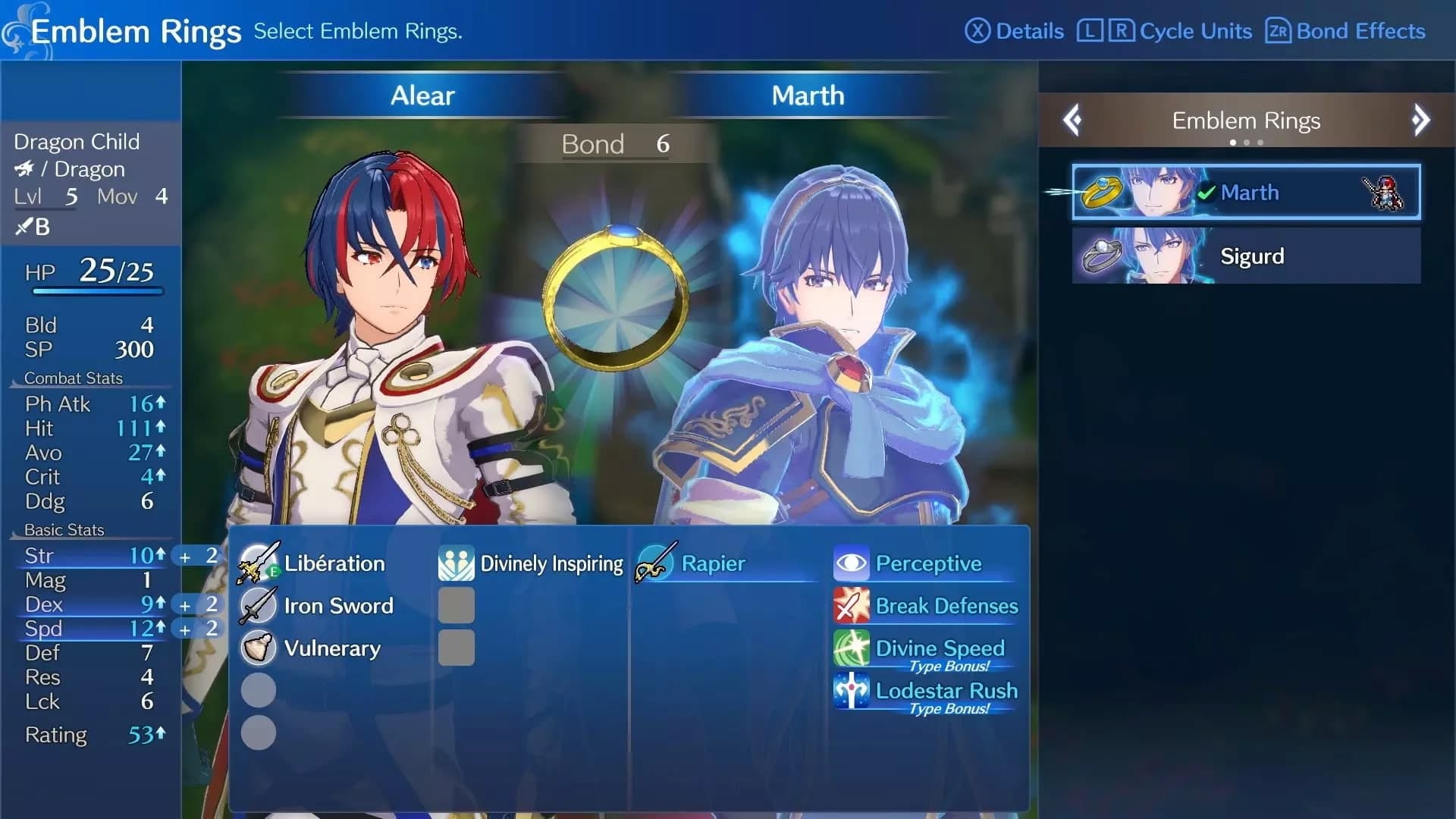 Why does Alear have a +2 speed modifier? It will cost you 11 button presses to figure out that valuable piece of information.
Why does Alear have a +2 speed modifier? It will cost you 11 button presses to figure out that valuable piece of information.
In case it's not clear, for a game that requires players to have a keen sense on where units are, which abilities and weapons they're equipped with, and what their weaknesses are, these UI/UX issues are unacceptable. Sure, previous games in the series had two screens to work with, but surely they could have thought of something better than what was implemented.
In summary, for a game on a console with far more pixels than a 3DS, DS, or even a GBA, this game has far too many issues with its UI, and I hope that these issues will be addressed in future installments.
The Story
My final major gripe with this game is its narrative. Or more specifically, its lack of one.
Let me start with an example. Very minor spoilers below:
Picture all of your units, along with their Emblems, pledging their lives to fight one final battle. Some have been undyingly loyal from day one, while others have acquiesced to fate, recognizing that differences must be set aside in order to save the world. The fate of the world rests upon this moment, and none of your units are taking it lightly.
As your gaggle of anime dweebs stand steadfast, the music swells in intensity while the main villain snarls one final vicious insult, taunting you with malicious indifference. Suddenly, as the battle starts, the game's main theme song cuts through the melodrama like a sharpened , kicking the action into high gear.
I ain't gonna lie: this was an awesome moment. It genuinely felt intense, exciting, and (I can't believe I'm saying this) inspiring as I pondered, for the final time, how best to prepare for what seemed like impossible odds. It was the highest point in my entire playthrough, and stands as a shining example of what games in this genre should aspire to achieve.
So, how does this square with my complaint about Engage's narrative? Well, it's because this moment occurs right before the end of the game. It's the one and only time that Engage had elicited those feelings from me.
In other words, it takes roughly 40-60 hours for Engage to give the player any sense of purpose, or for the narrative to gain any kind of tension or drama. This is far too long.
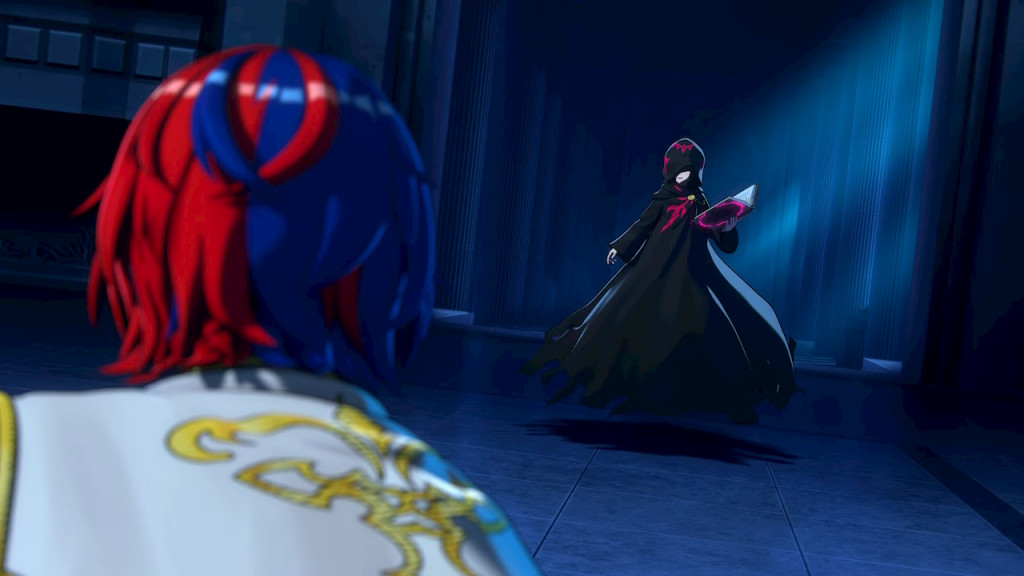 The pre-rendered cutscenes are nice, but are very few and far between. Image Credit: Thumb Culture
The pre-rendered cutscenes are nice, but are very few and far between. Image Credit: Thumb Culture
I think the main problem with Engage's story is that it follows an awfully-predictable formula based on collecting things: as soon as I landed in Firene and saw that there were 4 more countries on the map, I knew exactly how the story would play out: visiting each kingdom to find their pact rings, encountering some kind of snag in the process, but ultimately leaving with new rings (and new party members) in tow. And sure enough, that's exactly how it went.
As I processed this, I came to a dreadful realization.
"Oh no", I thought. "It's one of those games"
I absolutely hate it when a games's narrative is based around recruitment and collection because it telegraphs to the player the exact path that the story will take them through. The story becomes less of an organic human experience, and more like a grocery list to make tomorrow night's dinner. Firene? Check. Brodia? Check. Solm? Check. Elusia? Check.
And I don't think I need to explain how a painfully predictable story can sap any and all intrigue out of the experience. Inevitably, this means that Engage's story has absolutely no momentum until the last handful of chapters in the game. To say that Engage's pacing is terrible understates how much of a slog 80% of the game's story is.
But what about the characters that join the crew along the way? Surely they add some interesting dynamics to an otherwise dull story?
Hardly. As new units join the player's army, they're given about 5 minutes of screen time until they're whisked away to permanently live in the game's menus, never to be heard from again. Sure, they're happy to chatter away during support conversations, but aside from a , these optional cutscenes do little more than establishing that "this one likes to exercise", or "this one wants to be cute".
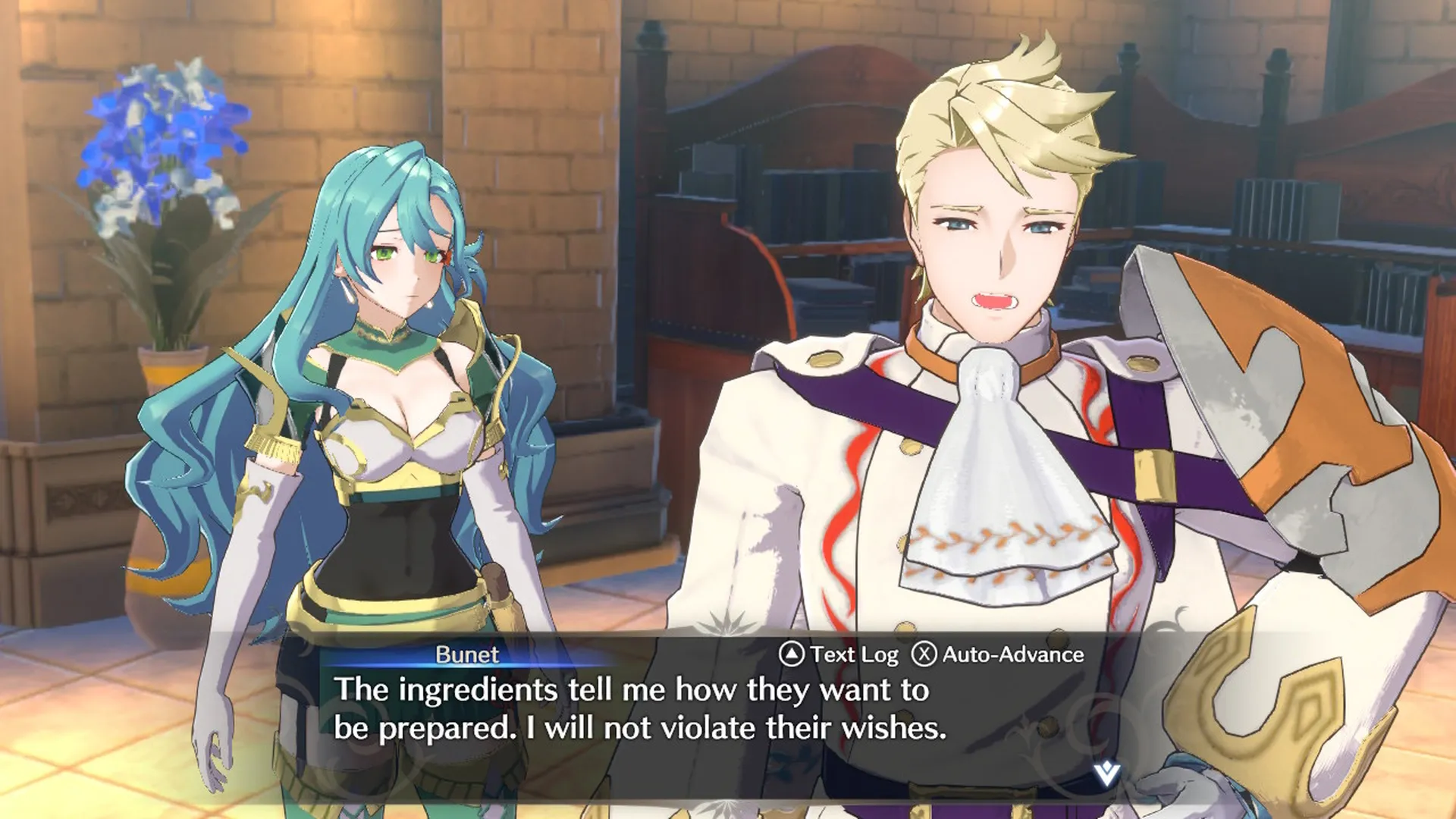 Gee, I wonder what the chef-looking character that loves to cook will talk to me about?
Gee, I wonder what the chef-looking character that loves to cook will talk to me about?
I can somewhat sympathize with Engage's writers: how do you weave new characters into a game's plot when almost each and every one of them ? How do you give depth to a character when the game's design basically prevents it?
If the series wants to cling to its perma-death design, then I don't think that this is a problem that can be solved. The only solution that I can think of is for future games to decrease the number of recruitable units so that more time can be spent with each one.
But regardless of why, the end result is that Engage's narrative loses steam very quickly because its character roster is ocean-wide and puddle-deep. And I've said this before: without compelling characters, there is no story. There's just things that happen.
To its credit, Engage does hint at something deeper with its characters: What exactly was Sombon's deal, and who was the Foundational Emblem? Why is Zephia so desperate for a family, and what led to the formation of the Four Hounds? What were Alear and Veyle like before the war 1000 years ago?.
But unfortunately, none of these questions are , and we're left with implications of a larger, more expansive narrative without it ever being delivered. Instead, Engage is content with telling (rather than showing) us about all these supposedly important events that happened 1000's of years ago, foolishly believing that a bit of exposition is enough to get players invested in it's story. Obviously, it's not.
Nevertheless, this is precisely why I wanted to begin this section with that single example of a time where Engage's narrative was thrilling and tense; it suggests that it's possible for a Fire Emblem game to be both mechanically and narratively interesting.
But unfortunately, this example also highlights how disappointing the rest of the game's story is. Engage's narrative could have been great, but it's perhaps one of the blandest, uninteresting stories in the entire series (and I've played Fates, which is routinely mocked for its terrible story).
Conclusion
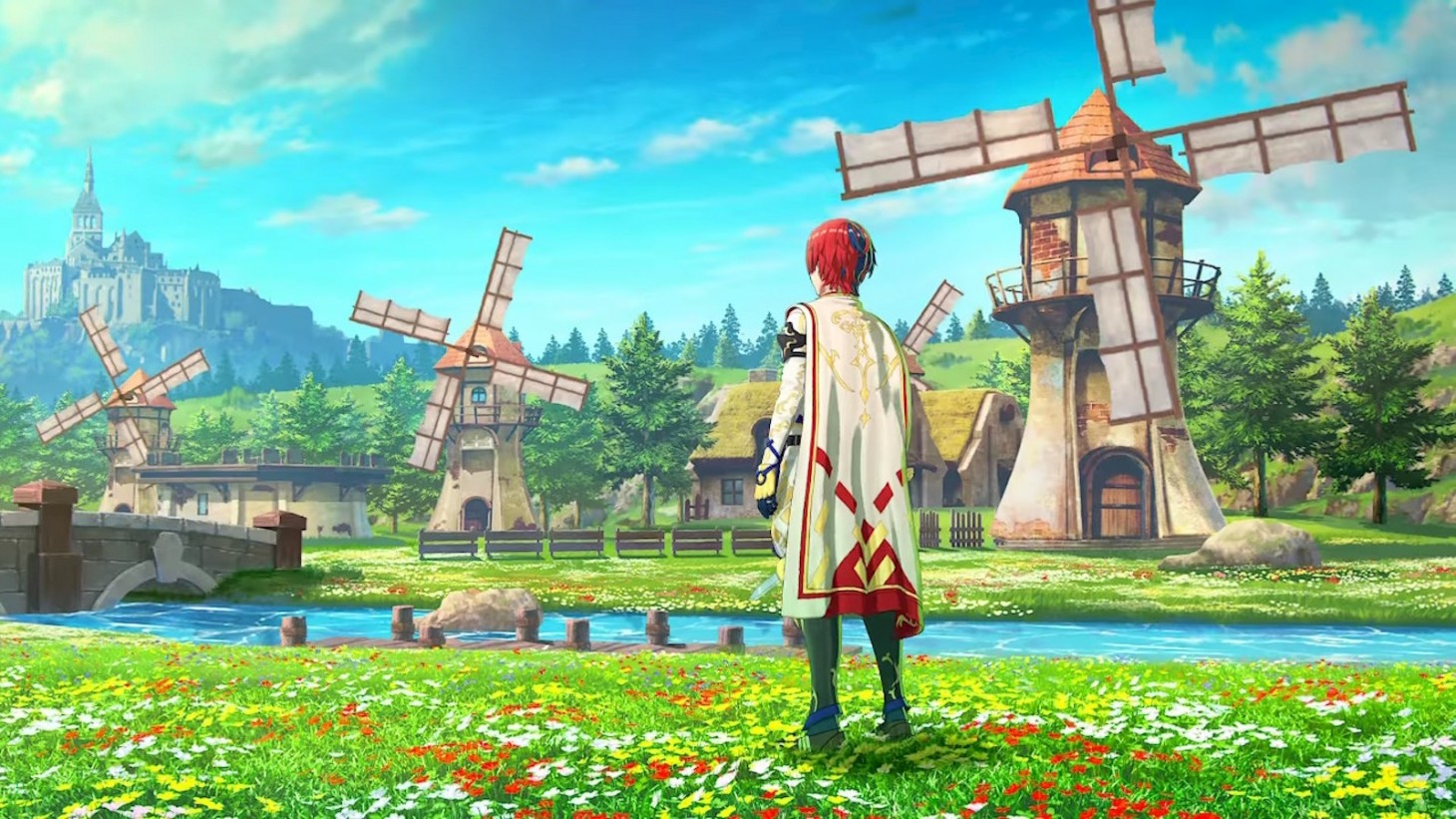 The main character, Alear, pondering a world where Fire Emblem games can be fun AND have great stories. Image Credit: Game Informer
The main character, Alear, pondering a world where Fire Emblem games can be fun AND have great stories. Image Credit: Game Informer
With all of that said (goddamnit, why am I so bad at keeping these reviews succinct?), I can confidently state that absolutely nobody plays Fire Emblem games for their stories. Indeed, not a single person on this planet has ever uttered the words, "I'm incredibly excited for the next Fire Emblem game's story!" Rather, their stories are often complimentary to what is already a deep and addicting experience. I'd much prefer the way that Engage turned out over the inverse (i.e. a story-heavy game with weaker gameplay).
In conclusion, I suppose this review can be summed up as:
In all seriousness, I hope this review was helpful for those that haven't played Engage, or provided some interesting points to consider for those that have.
(One final note: not a single Engage pun can be found in this review. I'm incredibly proud of myself for that.)
Verdict: 4 Critical Hits out of 5
Comment Policy: no flamewars or trolling. Just have fun and be nice!

